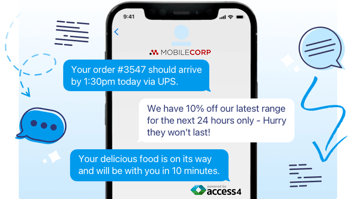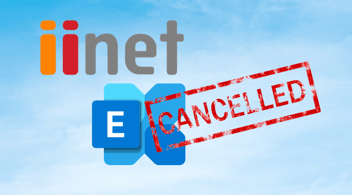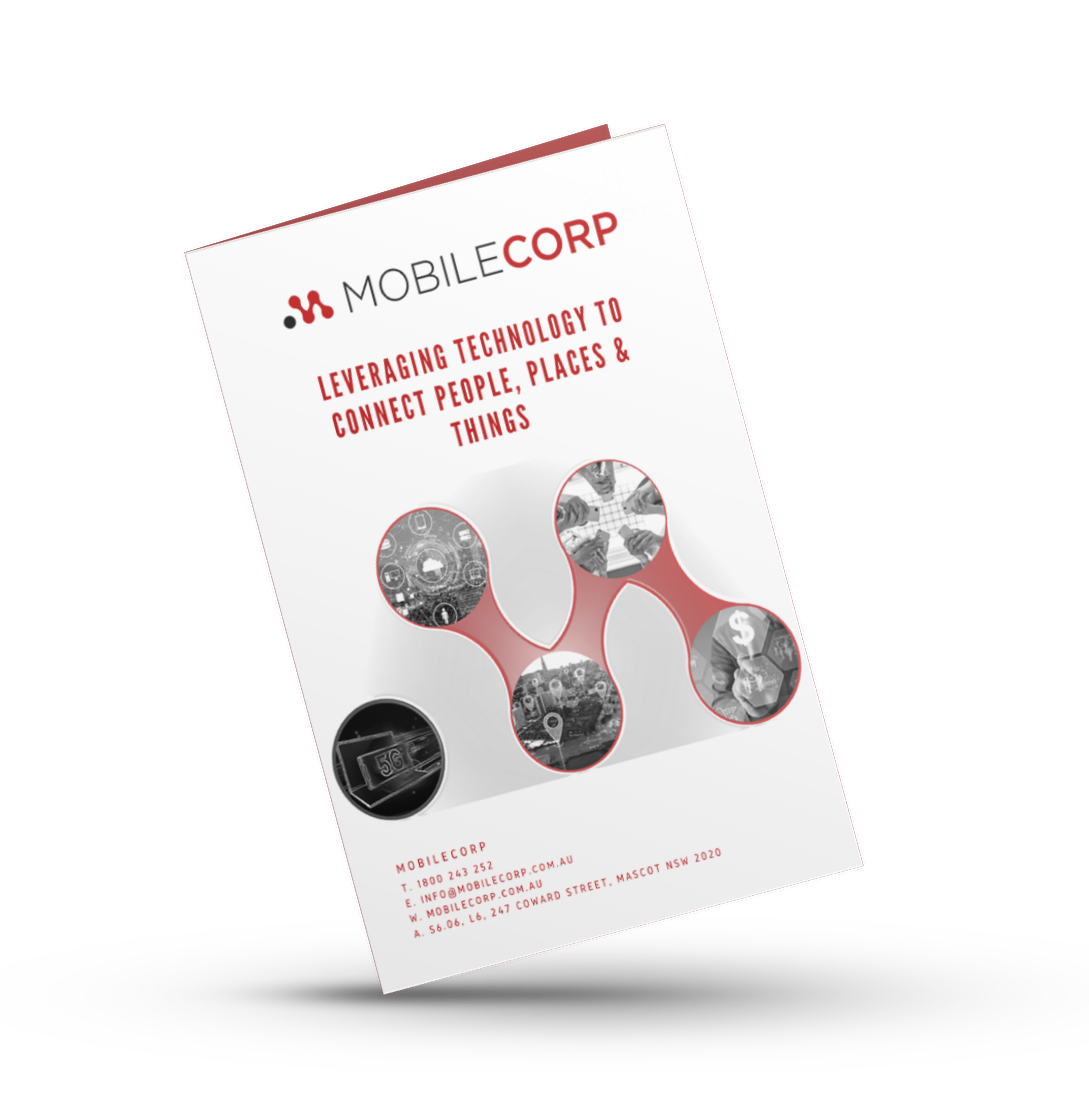Why you should immediately replace your on-premise phone system with secure Cloud Hosted Telephony
12 Jul 2024
On-premise phone systems are no longer just an inconvenience—they're a security risk.
With cyber threats becoming more sophisticated and frequent, your outdated phone system could be a vulnerable entry point for attackers. This isn't just a minor issue; it's a significant threat to your business's security and operations.
MobileCorp has been helping businesses transition from expensive, insecure on-premise phone systems to agile, secure cloud-hosted telephony solutions. With extensive knowledge in telecommunications and firsthand experience guiding companies through this transition, we understand the challenges and concerns you face.
In this article, you'll learn why making the switch to cloud-hosted telephony is not only a smart move for enhancing security but also a strategic decision for saving costs and boosting your business's flexibility and reliability.
Let's explore how cloud-hosted telephony can transform your business operations and secure your communications infrastructure.
CONTENTS
Why should you move to Cloud Hosted Telephony now?
What are the consequences of your phone system being hacked?
Six ways Cloud Hosted Telephony enhances security
How to transition successfully to Cloud Hosted Telephony
MobileCorp recommends Access4 and UCXpress
Why should you move to Cloud Hosted Telephony now?
You may have had an on-premise phone system forever, and not experienced a security breach. You might also think that being hacked is a long shot and you'll take your chances.
However, just because you haven't been hacked yet, doesn't mean that you are not at risk. Having an on-premises phone system is ignoring a blatant threat vector for your business.
There's a saying attributed to former FBI Director, Robert Mueller way back in 2012: "There are only two types of companies: those that have been hacked and those that will be."
It is challenging to assess the likelihood of your phone system being hacked in Australia, but we do know that several factors make it more likely. These include how old your on-premise system is, whether it is no longer supported with software and security updates from the manufacturer, and also whether your business is a lucrative target.
Phone system manufacturers are now all leading with the cloud business model, so there is a good chance that your aging legacy on-premise system is not being fully supported or protected with security updates.
Another reason that you may be put off upgrading, is you dread the whole process, and think it will be time-consuming, complex and expensive.
At MobileCorp, it is not. On the contrary moving to cloud hosted telephony is a simple exercise, the responsibility for the transition will be handled by us, and you are almost guaranteed to save money.
It's a no-brainer really.
What are the consequences of your phone system being hacked?
You may not wish to dwell on this if you still have an on-premise phone system, but let's consider the consequences if you are hacked. These are:
Financial Loss: Hackers can make unauthorised calls, often to premium-rate numbers, resulting in substantial phone bills. This can lead to significant financial losses.
Data Breach: Sensitive information, such as customer data, intellectual property, and personal employee information, can be intercepted or stolen. This can result in legal liabilities and damage to the company's reputation.
Service Disruption: A hacked phone system can lead to disruptions in communication, affecting business operations, customer service, and internal coordination. This can reduce productivity and impact the overall efficiency of the business.
Reputation Damage: News of a security breach can damage the business's reputation, leading to a loss of customer trust and potential business opportunities. This can be especially damaging if sensitive customer information is compromised.
Increased Costs for Recovery and Security: Recovering from a hack can be costly, involving expenses related to forensic investigations, system repairs, and enhancements to security measures. The business might also need to invest in employee training and new technologies to prevent future breaches.
Productivity Loss: The time and resources spent addressing the hack and its aftermath can detract from normal business activities, leading to lost productivity and potential revenue losses.
Six ways Cloud Hosted Telephony enhances security
Switching to cloud-hosted telephony offers substantial security advantages that are crucial in today’s digital landscape.
Here’s six ways that transitioning to a cloud-hosted system can significantly enhance your business’s security posture:
#1. The power of data encryption
Threat: On-premise phone systems often lack comprehensive encryption protocols, leaving your voice and data traffic vulnerable to interception. This exposure can lead to unauthorised access to sensitive business information.
Prevention: Cloud-hosted telephony solutions provide robust data encryption, ensuring that all communications are secure from unauthorised access. This encryption applies to both voice and data traffic, protecting sensitive information from interception during transmission. Unlike many on-premise systems, cloud-hosted systems maintain high security standards consistently.
#2. Staying ahead of threats with centralised security management
Threat: On-premise systems often struggle to keep up with the constant evolution of security threats. In-house IT teams may lack the resources or expertise to implement timely updates, leaving the system exposed to vulnerabilities and cyber threats.
Prevention: With cloud-hosted telephony, security is managed centrally by the service provider. This centralised approach ensures that all aspects of security, from firewalls to intrusion detection systems, are consistently monitored and maintained. It also means that security policies and updates are uniformly applied across the entire system, reducing the risk of security gaps that can occur with fragmented on-premise systems.
#3. Proactive protection with advanced threat detection and response
Threat: On-premise systems may lack advanced threat detection and response mechanisms, leaving them vulnerable to undetected security breaches. The absence of proactive monitoring can result in significant damage before threats are identified and mitigated.
Prevention: Leading cloud telephony providers employ advanced threat detection and response mechanisms. These systems continuously monitor for unusual activity or potential security threats and can automatically respond to mitigate risks. This proactive approach to security helps to prevent breaches before they occur, offering a level of protection that is difficult to achieve with on-premise systems.
#4. Enhanced access control and authentication
Threat: On-premise systems often rely on outdated access control measures, making it easier for unauthorised personnel to gain access to sensitive information. Weak authentication protocols can further compromise the security of your communication system.
Prevention: Cloud-hosted systems offer enhanced access control and authentication features. Multi-factor authentication (MFA), role-based access controls, and secure login protocols ensure that only authorised personnel can access the communication system. These measures protect against unauthorised access and help safeguard sensitive information.
#5. Robust disaster recovery plans
Threat: Most on-premise systems do not have adequate disaster recovery plans in place. A system failure, cyberattack, or natural disaster can result in significant data loss and prolonged downtime, severely impacting business operations.
Prevention: Cloud-hosted telephony solutions include comprehensive disaster recovery plans. These plans ensure that your data is regularly backed up and can be quickly restored in case of a system failure, cyberattack, or natural disaster. This level of preparedness is often beyond the capabilities of most on-premise systems, which may not have the necessary resources or infrastructure for effective disaster recovery.
How to transition successfully to Cloud Hosted Telephony
Making the switch from an on-premise phone system to a cloud-hosted telephony solution might seem daunting, but with a bit of planning and the right approach, the transition will be smooth and straightforward.
Most of the work will be handled by the service provider for the product you choose. Your responsibility will mainly be to provide the brief of what you require.
Here’s a step-by-step guide to help you navigate the process:
Step 1: Assess Your Current System and Needs
Begin by evaluating your current phone system and identifying its limitations. Consider factors such as call volume, number of users, features you currently use, and any you would like to add like hunt groups, virtual assistants, voice mail, call recording or integration with your CRM. Articulate your pain points like high maintenance costs, inflexibility adding or removing users, or security vulnerabilities. Determine your business's specific needs and how a cloud-hosted solution can address them.
Step 2: Choose the Right Cloud Telephony Product and Provider
There are numerous cloud telephony products available in the Australian market. Some are home-grown and some imported from abroad. Some are carrier-led like Telstra IP Telephony (TIPT) and some are private companies like Access4 Cloud Calling. Most are based on the Broadworks carrier-grade infrastructure. You will find that some products are best suited to enterprise organisations with large number of users or call centres, and others are a better fit for SMBs.
Selecting a reputable cloud telephony provider is crucial. Look for providers with a proven track record, excellent customer support, and robust security measures. Evaluate their service offerings, including scalability, reliability, and compliance with industry standards. An essential aspect to consider is whether the provider can manage the entire transition process for you. At MobileCorp we take responsibility for every step of the process from network design, licensing, number porting, cloud portal setup and device configuration, to testing, training, and go-live management. We also offer an ongoing managed service to provide change management and support. This inclusive approach ensures a seamless transition with minimal disruption to your business operations.
Step 3: Plan the Transition
Develop a comprehensive transition plan that outlines each step of the migration process. This plan should include timelines, key milestones, and responsibilities. Consider factors such as data migration, employee training, and integration with existing systems. A detailed plan will help ensure a seamless transition with minimal disruption to your business operations. Your chosen provider should assist you in creating this plan, leveraging their expertise to address any potential challenges.
MobileCorp recommends Access4 and UCXpress
If you still have an on-premise phone system, chances are you are a small to medium business. To be honest almost all larger businesses and enterprises have moved their phone systems to the Cloud.
There are two main choices when it comes to cloud hosted phone system pricing models - pay per seat per month, or pay per phone line per month.
Paying per line is usually more palatable for companies with aging legacy PBX, and for companies with large numbers of phones but low call volumes - like nursing homes, hotels, hospitals.
UCXpress by Access4 is a 'pay per line' model. It provides:
- Cost effective calling with a familiar pricing structure (systems with lines and usage)
- The flexibility to increase or decrease the number of users as business needs change
- A supported phone system built for remote work
Ask us for a demo or download the brochure.

About MobileCorp
MobileCorp is a Sydney-based communications technology company. We support enterprise and business by providing managed endpoints and ICT services including unified communications, mobile fleet management, mobile device security, mobile device management, expense management and managed connectivity solutions.
Cloud Michelle Lewis 12 Jul 2024
Related Posts
Popular Tags
- Mobility (81)
- Mobile Devices (79)
- Telstra (66)
- 5G (64)
- MobileCorp Managed Services (55)
- Mobile Network (34)
- Networks (34)
- Cradlepoint (32)
- Apple (29)
- MobileCorp (29)
- iPhone (25)
- Remote Working (23)
- Network (17)
- Covid-19 (16)
- Mobile Security (15)
- Wireless WAN (15)
- Cyber Security (14)
- UEM (14)
- MDM (11)
- Mobile Expense Management (10)
- Mobile Device Management (9)
- TEMs (9)
- Mobile Device Lifecycle (8)
- Cloud (7)
- Unified Comms (7)
- Unified Communications (7)
- Wandera (7)
- Android (6)
- Sustainability (6)
- Data Networks (5)
- Network Security (5)
- Samsung (5)
- Security (5)
- Digital Experience (4)
- IOT (4)
- Microsoft Intune (4)
- Blog (3)
- IT Services (3)
- Microsoft (3)
- Data (2)
- Government (2)
- Microsoft 365 & Teams (2)
- Retail (2)
- nbn (2)
- webinar (2)
- 4G (1)
- DAS (1)
- EMM (1)
- Emerging Technologies (1)
- Hosted Telephony (1)
- Managed Desktops (1)
- SD-WAN (1)
- Starlink (1)
- Telstra Services (1)
- WWAN (1)
- video (1)







